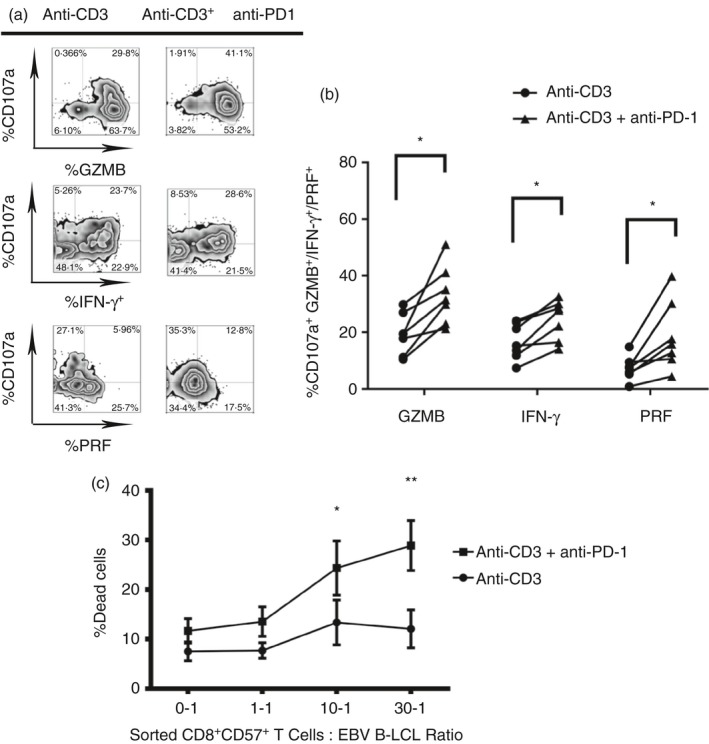Figure 6.

Blockade of programmed death 1 (PD‐1) receptor restores cytotoxicity to target cells and cytokine release on CD8+ CD57+ T cells. Blockade of PD‐1 is performed on experiments of cytokine release and degranulation upon T‐cell receptor (TCR) stimulation. Peripheral blood mononculear cells (PBMCs) from healthy donors were pre‐treated with anti‐PD‐1 for 30 min in ice. The cells were washed and treated with anti‐IgG for 30 min in ice. After, they were seeded in anti‐CD3 coated 96‐well V‐bottomed plates and left in an incubator for 4 hr in the presence of CD107a, brefeldin A and monensin. Then, the cells were stained for surface receptors and intracellular cytokines and cytotoxic granules and the samples were acquired and analysed. (a) Dot plots show gating strategy used to define cytokine release and degranulation of cytotoxic granules. (b) Data from six experiments are shown, *P < 0·05, **P < 0·01, Wilcoxon t‐test. (c) Blockade of PD‐1 was also performed in cytotoxicity to autologous Epstein–Barr virus (EBV)‐infected lymphoblastoid B cell lines (B‐LCL). Sorted CD8+ CD57+ T cells were incubated with autologous B‐LCL in anti‐CD3 coated 96V plates to the ratio 0‐1, 1‐1, 10‐1, 30‐1 for 4 hr. The cell death was detected by positivity to 7‐AAD. Data from three experiments are shown. Two‐way analysis of variance Sidak's multiple comparison *P < 0·05, **P < 0·001.
